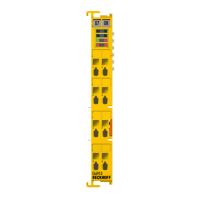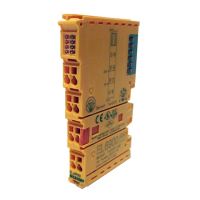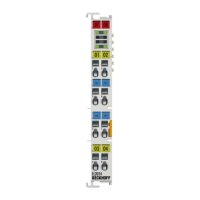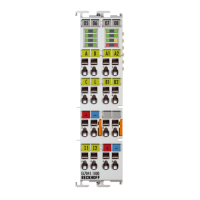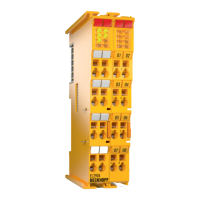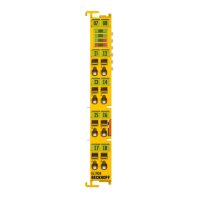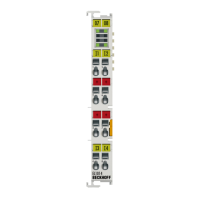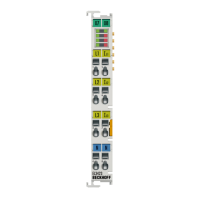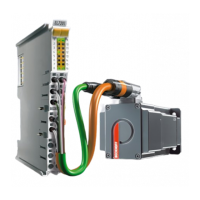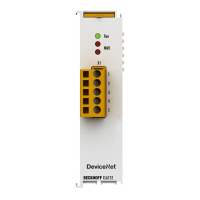Foreword
EL9xxx 13Version: 3.9
2.5 Non-reactive Bus Terminals
Use of non-reactive Bus or EtherCAT Terminals in safety applications
If a Bus or EtherCAT Terminal is described as non-reactive, this means that the consecutive termi-
nal behaves passively in a safety application (e.g. in the case of the all-pole switch-off of a potential
group).
In this case the terminals do not represent an active part of the safety controller and do not affect
the Safety Integrity Level (SIL) or Performance Level (PL) attained in the safety application.
For details, please refer to chapter 2.17f in the TwinSAFE application manual.
NOTE
Pay attention to the hardware version
Please pay attention to the information about the hardware version and non-reactivity of the respective Bus
Terminal in the chapters "Technical Data" or "Firmware Compatibility"!
Only terminals with the appropriate hardware version may be used without the attained SIL/PL being af-
fected!
The Bus or EtherCAT Terminals regarded as non-reactive at the time of preparing this document are listed in
the following tables together with their respective hardware versions.
Terminal name
Bus Terminal
Hardware versions
KL2408 05 - 07
KL2809 02
KL2134 09
KL2424 05
KL9110 07 -
Terminal name
EtherCAT terminal
Hardware versions
EL2004 15 - 21
EL2008 07 - 13
EL2022 09 -
EL2024 06 - 11
EL2034 06 - 07
EL2809 01 - 07
EL2872 01 - 07
EL2878-0005 00 -
EL7031 02 - 11
EL7037 02 -
EL9110 13 -
EL9410 16 -
External wiring
The following requirements are to be ensured by the system manufacturer and must be incorporated into the
user documentation.
• Protection class IP54
The terminals must be installed in IP54 control cabinets to ensure the necessary protection class IP54.
• Power supply unit
The standard terminals must be supplied with 24V by an SELV/PELV power supply unit with an output
voltage limit U
max
of 60V in the event of a fault.
• Prevention of feedback
Feedback can be prevented through different measures. These are described below. In addition to
mandatory requirements there are also optional requirements, of which only one needs to be selected.
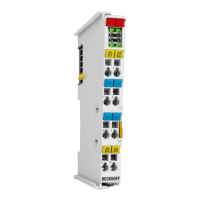
